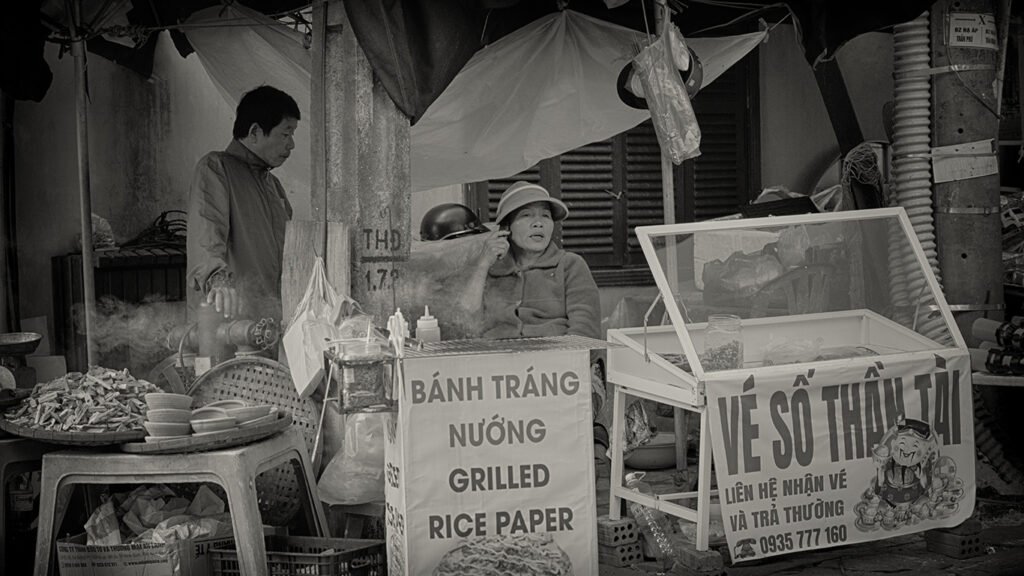
She sat low on a woven stool near the market wall, flanked by two round trays of bánh tráng mè—thin rice paper speckled with black sesame seeds, some still warm from the griddle, others wrapped in banana leaf bundles tied with red string.
Bà Sáu, sixty-something, sun-darkened skin and bright eyes under a faded nón lá, called out in a voice practiced over decades: “Bánh tráng nè! Mè đen! Nóng giòn, mới nướng sáng nay!” Rice paper! Sesame! Fresh and crisp, just grilled this morning!
Her hands moved constantly—folding, stacking, fanning off the flies. A shallow charcoal brazier beside her still held the echo of the morning fire. Children knew her as the crispy-lady. Locals called her chị Sáu, though she’d been a bà for years. Tourists sometimes stopped, curious, pointing to the delicate sheets like art.
“Eat now or later?” she’d ask, holding up a piece.
She’d been coming to this corner since her thirties—before smartphones, before fancy coffee, before lanterns lit up just for Instagram. Back then, the rice was milled by hand. The trays dried on rooftops. The streets smelled of fish sauce and firewood.
Now, she still wakes at 4 a.m., steams the batter, lays each circle onto the griddle with care. By noon, the sun burned white. Still, she sat, fanning herself with an old cardboard sign, calling out through the rising heat: “Bánh tráng mè đây! Ai ăn không?” Sesame rice paper here! Who wants some?
And whether they stopped or not,
she sold more than food—
she sold memory, texture,
a crackle of Hội An in every bite.